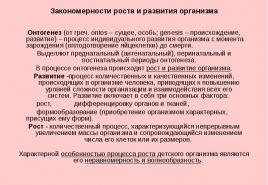The formula for calculating the length of a vector in space. How to find the coordinates of a vector
First of all, you need to understand the very concept of a vector. In order to introduce the definition of a geometric vector, let us recall what a segment is. Let us introduce the following definition.
Definition 1
A segment is a part of a straight line that has two boundaries in the form of points.
A segment can have 2 directions. To indicate the direction, we will call one of the boundaries of the segment its beginning, and the other boundary - its end. The direction is indicated from its beginning to the end of the segment.
Definition 2
A vector or a directed segment is a segment for which it is known which of the boundaries of the segment is considered the beginning and which is its end.
Designation: Two letters: $ \\ overline (AB) $ - (where $ A $ is its beginning and $ B $ is its end).
One small letter: $ \\ overline (a) $ (fig. 1).
Let us now introduce directly the concept of vector lengths.
Definition 3
The length of the vector $ \\ overline (a) $ is the length of the segment $ a $.
Notation: $ | \\ overline (a) | $
The concept of the length of a vector is associated, for example, with such a concept as the equality of two vectors.
Definition 4
Two vectors will be called equal if they satisfy two conditions: 1. They are co-directed; 1. Their lengths are equal (Fig. 2).
In order to define vectors, a coordinate system is introduced and coordinates for the vector in the entered system are determined. As we know, any vector can be expanded as $ \\ overline (c) \u003d m \\ overline (i) + n \\ overline (j) $, where $ m $ and $ n $ are real numbers, and $ \\ overline (i ) $ and $ \\ overline (j) $ are unit vectors on the $ Ox $ and $ Oy $ axes, respectively.
Definition 5
The expansion coefficients of the vector $ \\ overline (c) \u003d m \\ overline (i) + n \\ overline (j) $ will be called the coordinates of this vector in the introduced coordinate system. Mathematically:
$ \\ overline (c) \u003d (m, n) $
How do I find the length of a vector?
In order to derive a formula for calculating the length of an arbitrary vector from its given coordinates, consider the following problem:
Example 1
Given: vector $ \\ overline (α) $ with coordinates $ (x, y) $. Find: the length of this vector.
Let us introduce the Cartesian coordinate system $ xOy $ on the plane. Set aside $ \\ overline (OA) \u003d \\ overline (a) $ from the origin of the introduced coordinate system. Let us construct projections $ OA_1 $ and $ OA_2 $ of the constructed vector on the axes $ Ox $ and $ Oy $, respectively (Fig. 3).
The vector $ \\ overline (OA) $ constructed by us will be the radius vector for the point $ A $, therefore, it will have coordinates $ (x, y) $, which means
$ \u003d x $, $ [OA_2] \u003d y $
Now we can easily find the required length using the Pythagorean theorem, we get
$ | \\ overline (α) | ^ 2 \u003d ^ 2 + ^ 2 $
$ | \\ overline (α) | ^ 2 \u003d x ^ 2 + y ^ 2 $
$ | \\ overline (α) | \u003d \\ sqrt (x ^ 2 + y ^ 2) $
Answer: $ \\ sqrt (x ^ 2 + y ^ 2) $.
Conclusion:To find the length of the vector, which has its coordinates, you need to find the root of the square of the sum of these coordinates.
Sample tasks
Example 2
Find the distance between the points $ X $ and $ Y $, which have the following coordinates: $ (- 1.5) $ and $ (7.3) $, respectively.
Any two points can be easily associated with the concept of a vector. Consider, for example, the vector $ \\ overline (XY) $. As we already know, the coordinates of such a vector can be found by subtracting the corresponding coordinates of the starting point ($ X $) from the coordinates of the end point ($ Y $). We get that
The abscissa and ordinate axes are called coordinates vector. It is customary to indicate the coordinates of a vector in the form (x, y), and the vector itself as: \u003d (x, y).
The formula for determining the coordinates of a vector for two-dimensional problems.
In the case of a two-dimensional problem, a vector with known point coordinates A (x 1; y 1) and B (x 2 ; y 2 ) you can calculate:
\u003d (x 2 - x 1; y 2 - y 1).
The formula for determining the coordinates of a vector for spatial problems.
In the case of the spatial problem, a vector with known point coordinatesA (x 1; y 1;z 1 ) and B (x 2 ; y 2 ; z 2 ) can be calculated by applying the formula:
= (x 2 - x 1 ; y 2 - y 1 ; z 2 - z 1 ).
Coordinates give an all-encompassing characteristic of the vector, since the coordinates can be used to construct the vector itself. Knowing the coordinates, it is easy to calculate and vector length... (Property 3 below).
Vector coordinate properties.
1. Any equal vectors in a single coordinate system have equal coordinates.
2. Coordinates collinear vectors proportional. Provided that none of the vectors are zero.
3. The square of the length of any vector is equal to the sum of the squares of its coordinates.
4.During surgery vector multiplication on real number each of its coordinates is multiplied by this number.
5. When adding vectors, calculate the sum of the corresponding vector coordinates.
6. Scalar product two vectors is equal to the sum of the products of their respective coordinates.
First of all, you need to understand the very concept of a vector. In order to introduce the definition of a geometric vector, let us recall what a segment is. Let us introduce the following definition.
Definition 1
A segment is a part of a straight line that has two boundaries in the form of points.
A segment can have 2 directions. To indicate the direction, we will call one of the boundaries of the segment its beginning, and the other boundary - its end. The direction is indicated from its beginning to the end of the segment.
Definition 2
A vector or a directed segment is a segment for which it is known which of the boundaries of the segment is considered the beginning and which is its end.
Designation: Two letters: $ \\ overline (AB) $ - (where $ A $ is its beginning and $ B $ is its end).
One small letter: $ \\ overline (a) $ (fig. 1).
Let us now introduce directly the concept of vector lengths.
Definition 3
The length of the vector $ \\ overline (a) $ is the length of the segment $ a $.
Notation: $ | \\ overline (a) | $
The concept of the length of a vector is associated, for example, with such a concept as the equality of two vectors.
Definition 4
Two vectors will be called equal if they satisfy two conditions: 1. They are co-directed; 1. Their lengths are equal (Fig. 2).
In order to define vectors, a coordinate system is introduced and coordinates for the vector in the entered system are determined. As we know, any vector can be expanded as $ \\ overline (c) \u003d m \\ overline (i) + n \\ overline (j) $, where $ m $ and $ n $ are real numbers, and $ \\ overline (i ) $ and $ \\ overline (j) $ are unit vectors on the $ Ox $ and $ Oy $ axes, respectively.
Definition 5
The expansion coefficients of the vector $ \\ overline (c) \u003d m \\ overline (i) + n \\ overline (j) $ will be called the coordinates of this vector in the introduced coordinate system. Mathematically:
$ \\ overline (c) \u003d (m, n) $
How do I find the length of a vector?
In order to derive a formula for calculating the length of an arbitrary vector from its given coordinates, consider the following problem:
Example 1
Given: vector $ \\ overline (α) $ with coordinates $ (x, y) $. Find: the length of this vector.
Let us introduce the Cartesian coordinate system $ xOy $ on the plane. Set aside $ \\ overline (OA) \u003d \\ overline (a) $ from the origin of the introduced coordinate system. Let us construct projections $ OA_1 $ and $ OA_2 $ of the constructed vector on the axes $ Ox $ and $ Oy $, respectively (Fig. 3).
The vector $ \\ overline (OA) $ constructed by us will be the radius vector for the point $ A $, therefore, it will have coordinates $ (x, y) $, which means
$ \u003d x $, $ [OA_2] \u003d y $
Now we can easily find the required length using the Pythagorean theorem, we get
$ | \\ overline (α) | ^ 2 \u003d ^ 2 + ^ 2 $
$ | \\ overline (α) | ^ 2 \u003d x ^ 2 + y ^ 2 $
$ | \\ overline (α) | \u003d \\ sqrt (x ^ 2 + y ^ 2) $
Answer: $ \\ sqrt (x ^ 2 + y ^ 2) $.
Conclusion:To find the length of the vector, which has its coordinates, you need to find the root of the square of the sum of these coordinates.
Sample tasks
Example 2
Find the distance between the points $ X $ and $ Y $, which have the following coordinates: $ (- 1.5) $ and $ (7.3) $, respectively.
Any two points can be easily associated with the concept of a vector. Consider, for example, the vector $ \\ overline (XY) $. As we already know, the coordinates of such a vector can be found by subtracting the corresponding coordinates of the starting point ($ X $) from the coordinates of the end point ($ Y $). We get that
First of all, you need to understand the very concept of a vector. In order to introduce the definition of a geometric vector, let us recall what a segment is. Let us introduce the following definition.
Definition 1
A segment is a part of a straight line that has two boundaries in the form of points.
A segment can have 2 directions. To indicate the direction, we will call one of the boundaries of the segment its beginning, and the other boundary - its end. The direction is indicated from its beginning to the end of the segment.
Definition 2
A vector or a directed segment is a segment for which it is known which of the boundaries of the segment is considered the beginning and which is its end.
Designation: Two letters: $ \\ overline (AB) $ - (where $ A $ is its beginning and $ B $ is its end).
One small letter: $ \\ overline (a) $ (fig. 1).
Let us now introduce directly the concept of vector lengths.
Definition 3
The length of the vector $ \\ overline (a) $ is the length of the segment $ a $.
Notation: $ | \\ overline (a) | $
The concept of the length of a vector is associated, for example, with such a concept as the equality of two vectors.
Definition 4
Two vectors will be called equal if they satisfy two conditions: 1. They are co-directed; 1. Their lengths are equal (Fig. 2).
In order to define vectors, a coordinate system is introduced and coordinates for the vector in the entered system are determined. As we know, any vector can be expanded as $ \\ overline (c) \u003d m \\ overline (i) + n \\ overline (j) $, where $ m $ and $ n $ are real numbers, and $ \\ overline (i ) $ and $ \\ overline (j) $ are unit vectors on the $ Ox $ and $ Oy $ axes, respectively.
Definition 5
The expansion coefficients of the vector $ \\ overline (c) \u003d m \\ overline (i) + n \\ overline (j) $ will be called the coordinates of this vector in the introduced coordinate system. Mathematically:
$ \\ overline (c) \u003d (m, n) $
How do I find the length of a vector?
In order to derive a formula for calculating the length of an arbitrary vector from its given coordinates, consider the following problem:
Example 1
Given: vector $ \\ overline (α) $ with coordinates $ (x, y) $. Find: the length of this vector.
Let us introduce the Cartesian coordinate system $ xOy $ on the plane. Set aside $ \\ overline (OA) \u003d \\ overline (a) $ from the origin of the introduced coordinate system. Let us construct projections $ OA_1 $ and $ OA_2 $ of the constructed vector on the axes $ Ox $ and $ Oy $, respectively (Fig. 3).
The vector $ \\ overline (OA) $ constructed by us will be the radius vector for the point $ A $, therefore, it will have coordinates $ (x, y) $, which means
$ \u003d x $, $ [OA_2] \u003d y $
Now we can easily find the required length using the Pythagorean theorem, we get
$ | \\ overline (α) | ^ 2 \u003d ^ 2 + ^ 2 $
$ | \\ overline (α) | ^ 2 \u003d x ^ 2 + y ^ 2 $
$ | \\ overline (α) | \u003d \\ sqrt (x ^ 2 + y ^ 2) $
Answer: $ \\ sqrt (x ^ 2 + y ^ 2) $.
Conclusion:To find the length of the vector, which has its coordinates, you need to find the root of the square of the sum of these coordinates.
Sample tasks
Example 2
Find the distance between the points $ X $ and $ Y $, which have the following coordinates: $ (- 1.5) $ and $ (7.3) $, respectively.
Any two points can be easily associated with the concept of a vector. Consider, for example, the vector $ \\ overline (XY) $. As we already know, the coordinates of such a vector can be found by subtracting the corresponding coordinates of the starting point ($ X $) from the coordinates of the end point ($ Y $). We get that
12. Vector length, segment length, angle between vectors, condition of vectors perpendicularity.
Vector - it is a directional line that connects two points in space or in a plane.Vectors are usually denoted with either small letters or start and end points. A dash is usually placed on top.
For example, a vector directed from a point A to the point B, we can denote a ,
Zero vector 0 or 0 - it is a vector whose start and end points are the same, i.e. A = B. Hence, 0 = – 0 .
Length (modulus) of a vectora is the length of the segment representing it AB, denoted by |a | ... In particular, | 0 | = 0.
The vectors are called collinearif their directed segments lie on parallel lines. Collinear vectors a and b are designated a || b .
Three or more vectors are called coplanarif they lie in the same plane.
Addition of vectors. Since vectors are directed segments, then their addition can be performed geometrically. (Algebraic addition of vectors is described below, in the paragraph "Unit orthogonal vectors"). Let's pretend that
a \u003d AB and b = CD,
then the vector __ __
a + b = AB+ CD
is the result of performing two operations:
a) parallel transfer one of the vectors so that its starting point coincides with the end point of the second vector;
b) geometric addition, i.e. constructing the resulting vector going from the starting point of the fixed vector to the end point of the transferred vector.
Subtraction of vectors. This operation is reduced to the previous one by replacing the subtracted vector with the opposite one: a – b = a + (– b ) .
Addition laws.
I. a + b = b + a (Permanent law).
II. (a + b ) + c = a + (b + c ) (Counting law).
III. a + 0 = a .
IV. a + (– a ) = 0 .
The laws of multiplying a vector by a number.
I. 1 · a = a , 0 · a = 0 , m· 0 = 0 , (– 1) · a = – a .
II. ma = a m, | ma | = | m | · | a | .
III. m (na ) \u003d (m n)a . (Approx.
law of multiplication by number).
IV. (m + n) a = ma + na , (S d e r e l and t
m(a + b ) = ma + mb . law of multiplication by number).
Dot product of vectors. __ __
Angle between nonzero vectors AB and CD - this is the angle formed by the vectors when they are parallel transferred before the points coincide A and C. Dot product of vectors a and b is called a number equal to the product of their lengths by the cosine of the angle between them:
![]()
If one of the vectors is zero, then their dot product, in accordance with the definition, is zero:
( a, 0 ) = ( 0 , b ) = 0 .
If both vectors are nonzero, then the cosine of the angle between them is calculated by the formula:

Scalar product ( a, a ) equal to | a | 2 is called scalar square.Vector length a and its scalar square are related by the ratio:
![]()
Dot product of two vectors:
- positivelyif the angle between vectors acute;
- negatively, if the angle between vectors stupid.
The scalar product of two nonzero vectors is zero then and only if the angle between them is right, i.e. when these vectors are perpendicular (orthogonal):
Dot product properties. For any vectors a, b, c and any number mthe following relations are valid:
I. (a, b ) = ( b, a ) . (Permanent law)
II. (ma, b ) = m( a, b ) .
III.(a + b, c ) = (a, c ) + (b, c ). (Regulatory law)
Unit orthogonal vectors. In any rectangular coordinate system, you can enter unit pairwise orthogonal vectorsi , j and k related to coordinate axes: i - with axis X, j - with axis Y and k - with axis Z... According to this definition:
(i , j ) = (i , k ) = (j , k ) = 0,
| i | = | j | = | k | = 1.
Any vector a can be expressed in terms of these vectors in a unique way: a = x i + y j + z k . Another form of notation: a = (x, y, z). Here x, y, z - coordinatesvector a in this coordinate system. In accordance with the last relation and the properties of unit orthogonal vectors i, j , k the dot product of two vectors can be expressed differently.
Let be a = (x, y, z); b = (u, v, w). Then ( a, b ) = xu + yv + zw.
The scalar product of two vectors is equal to the sum of the products of the corresponding coordinates.
Length (modulus) of a vector a = (x, y, z ) is equal to:
In addition, now we get the opportunity to conduct algebraic operations on vectors, namely, addition and subtraction of vectors can be performed along the coordinates:
a + b \u003d (x + u, y + v, z + w) ;
a – b \u003d (x– u, y– v, z– w) .
Vector product of vectors. Vector product [a, b ] vectorsa andb (in that order) the vector is called:

There is another formula for the vector length [ a, b ] :
| [ a, b ] | = | a | | b | sin ( a, b ) ,
i.e. length ( module ) vector product of vectorsa and b is equal to the product of the lengths (modules) of these vectors by the sine of the angle between them.In other words: length (modulus) of vector[ a, b ] is numerically equal to the area of \u200b\u200ba parallelogram built on vectors a and b .
Vector product properties.
I.Vector [ a, b ] is perpendicular (orthogonal)both vectors a and b .
(Prove it, please!).
II.[ a, b ] = – [ b, a ] .
III. [ ma, b ] = m[ a, b ] .
IV. [ a + b, c ] = [ a, c ] + [ b, c ] .
V. [ a, [ b, c ] ] = b (a, c ) – c ( a, b ) .
Vi. [ [ a, b ] , c ] = b (a, c ) – a (b, c ) .
Necessary and sufficient condition for collinearity vectors a = (x, y, z) and b = (u, v, w) :

Necessary and sufficient condition for coplanarity vectors a = (x, y, z), b = (u, v, w) and c = (p, q, r) :

PRI me r. Given vectors: a \u003d (1, 2, 3) and b = (– 2 , 0 ,4).
Calculate their dot and cross products and angle
between these vectors.
Solution. Using the corresponding formulas (see above), we get:
a). scalar product:
( a, b ) \u003d 1 (- 2) + 2 0 + 3 4 \u003d 10;
b). vector product:

| " |







